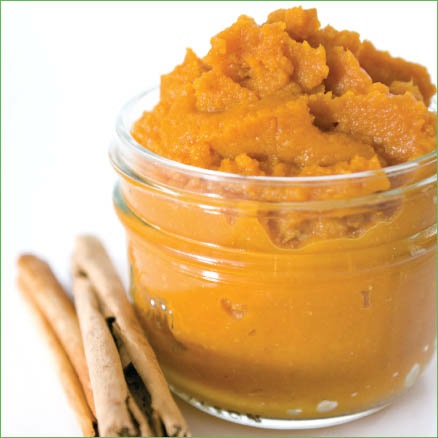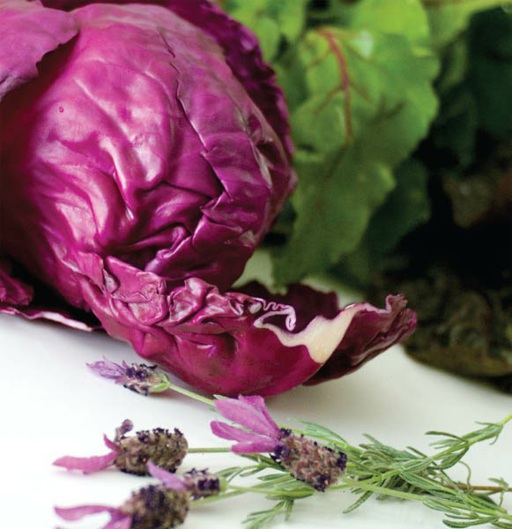The Healthy Green Drink Diet (10 page)
Read The Healthy Green Drink Diet Online
Authors: Jason Manheim

improve out iron metabolism. Because of its potent flavor, I suggest no more than one small clove per
drink, and sometimes even less than that. Build your tolerance; don’t ruin it by overdoing it from the start.
Ginger
This stem can add quite a spicy flavor boost to your green smoothies. Ginger is prized for its ability to
prevent motion sickness, eliminate digestive issues, prevent nausea and vomiting during pregnancy, and
its many anti-inflammatory effects. I keep a big piece in my freezer at all times and add it to my smoothies
whenever possible; just peel the outer layer off with a sharp knife and zest a bunch right into the blender
or slice off a thumb-sized piece from a fresh piece for juicing.
Pumpkin
The alpha-carotene, beta-carotene, and vitamin e in pumpkin make for a fantastic healthy skin supplement
and the heavy fiber content protects from heart disease, promotes healthy digestion, and controls blood

sugar levels. Fresh pumpkins are a bit tough to deal with, so I like to use Libby’s 100 percent Pure
Pumpkin. It comes in a can, and you can find it in the baking section of most grocery stores. Add a
tablespoon or two to any green smoothie as a boost to your daily skin regime. Naturally, it goes well with
a bit of fresh ground cinnamon and nutmeg.

Sprouts
Broccoli, radish, fenugreek, alfalfa, clover, and bean sprouts are all easy to grow, full of nutrition, and a
great addition to any green drink. They’re mini versions of the larger vegetables and living powerhouses
of vitamins, minerals, and enzymes. There are plenty of places online that offer high-quality seeds and
sprouting kits, so do some research and try for yourself. I like Sprout People (http://sproutpeople. org/),
they’ve been around for a long time and have fantastic kits for beginners.
Wheatgrass
Liquid energy. Wheatgrass is so nutrient-rich that 30 mls (~1 oz.) is equivalent in nutritional value to 1 kg.
(~2.2 lbs.) of leafy green veggies. Because wheatgrass is made up of 70 percent chlorophyll, it increases
the body’s production of red blood cells, lowers blood pressure, stimulates healthy tissue growth, and
breaks down carbon dioxide. I’ve seen shriveled old men turn into princes on this stuff. You can try
blending the whole grass if you have a very high-powered blender, but the texture is still a bit weird for
me (plus, humans have a hard time digesting wheatgrass due to its fibrous nature), so I recommend juicing
the grass and adding it to your smoothies after they’ve been blended. You can also use organic wheatgrass
powder, but try to use fresh when possible.

Sweeteners (If You Must)
Those of you using a good amount of fruits in your green drinks won’t have much of a need to sweeten
them even more, but sometimes a stronger sweet-kick is in order. For instance, anything with pumpkin
and cinnamon could use a few dates or a spoonful or two of honey… you know, just to get that pumpkin
pie effect.
If you’ve read the intro under “Adding Fruit,” you know I don’t have much room in my heart for processed
sugars, so this section only provides fresh, natural sweeteners despite the food industries’ fascination
with trying to create the next “sugar” that doesn’t inevitably kill you.
The list is short and sweet… use sparingly.
Agave Nectar

Agave nectar is produced from the agave plant, which is not a cactus but in fact is succulent like aloe and
is the same plant responsible for your college hangovers (tequila!). The best thing about agave nectar is
its low glycemic index compared to sugar or honey, yet it’s significantly sweeter. Use raw, organic agave
nectar that has been cold-processed to reduce enzyme destruction. A teaspoon or two will do.
Dates
As the oldest cultivated fruit, dates have an even lower glycemic load than agave and are high in
potassium, magnesium, selenium, and calcium. I can eat these things until I pass out, they’re so delicious.
Toss a few into your green smoothies (don’t forget to remove the pits) and bask in the sweet, ancient glory
of the date.
Honey
Okay, we’re done with the low glycemic load stuff, so those with blood sugar issues need not apply.
honey is the greatest invention ever created by the combined efforts of flowers and bees and has a slightly
increased sweetness factor than granulated sugar. Unlike granulated sugar, honey contains minerals,
vitamins, pollen, and protein. The pollen can even help combat your seasonal allergies. Get some from
your local farmer’s market. Like agave nectar, a teaspoon or two will do.



Tips: Buying, Saving, Growing,
and Storing
Buying
In order of most desirable to least desirable, these are the places you should purchase your fresh fruits
and veggies:
Local farmer’s market—these places are a fruit and vegetable wonderland. It’s straight from the local
farms so you can’t get any fresher than that. Try to find one that specializes in organic food and start a
relationship with a few producers; they’ll start saving you good stuff and offer great discounts.
Small local market—there are quite a few small, family-owned Asian and Mexican markets in my area
that sell produce from local farms. There prices are generally cheaper than big grocery stores, and the
variety is more diverse. Seek these places out, they’re worth it.
Grocery store—Nowadays, big grocery stores have a small organic produce section; however, the
fruits and veggies are almost always wilted and starting to go bad. Your best bet is the nonorganic
stuff. Purchase here only when the sales are unbeatable and you can’t get to a farmers market or small
local market.

Look for vibrant colors, crisp leaves, and stout, strong stalks. Keep away from anything wilted or overly